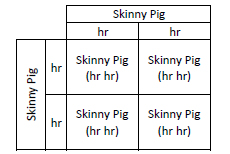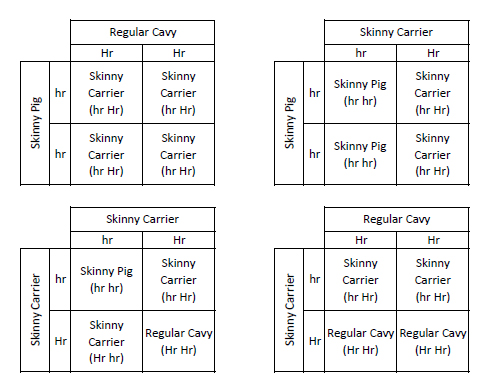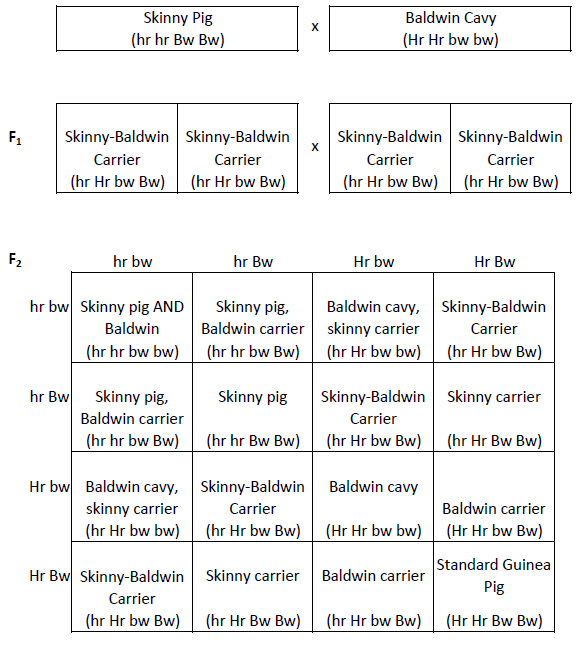Note, this article was written with a specific audience in mind: those interested in undertaking skinny pig breeding as a business or for show purposes. If you have not bred guinea pigs (furry or hairless) before and are looking for an overview, check out our first article, "Thinking of Breeding?"
Considerations for Breeding
Hairless guinea pigs are subject to the same risks in breeding as their hairy counterparts with some estimates putting sow mortality at 15-20% or one in five or six of every pregnancies resulting in the sow's death. There are also big chain pet stores selling skinny pigs and thus, factory-type breeding operations out there supplying them. Breeding should be undertaken for a higher purpose than simply to make more hairless guinea pigs or because babies are adorable or even to keep the variety active.
Why Breed?
Breeding should be undertaken to create animals that meet a standard of perfection for high quality, healthy, and well-conditioned hairless guinea pigs.
When breeding for improvement, you should always select the highest quality animals available to you and avoid breeding animals with serious health issues, or genetic mutations or deformities. Examples of such include skin tags, extra toes, or extra nipples.
Breeding should select for stocky body condition, big bright eyes, ears that lift a little before flopping over, and a good amount of folds and wrinkles. Big, full shoulders and a not-oversized rump should be preferred. By this, the guinea pig should be well balanced between front and back half, when looking down from above. Color shades and distribution should also be considered and the ideal in hairless guinea pigs in terms of color is very similar to that of haired guinea pigs.
Basics of Mendelian Genetics/Inheritance
Before breeding hairless guinea pigs it is important to understand the basics of Mendelian inheritance, as these laws outline and explain how hairlessness is passed from parents to offspring. As a quick summary, the hairless genes that produce either skinny pigs or Baldwins (a completely separate genetic mutation is responsible for each type of hairlessness) are recessive, and only express if an animal has two copies of the gene (receives one from each parent). This is why breeding a hairless guinea pig to a standard guinea pig will produce only haired babies, but all will carry the gene for hairlessness that the hairless parent contributed.
Breeding a hairless carrier to a corresponding hairless animal (skinny carrier to a skinny pig or Baldwin carrier to a Baldwin), will on average produce litters with 50% of the babies being hairless and 50% being haired gene carriers. Of course in small sample sizes as is currently seen by the independant cavy breeder this could turn out all hairless babies, or all haired babies, or any combination of haired carriers and hairless animals.
Breeding two same-type hairless guinea pigs together (skinny to skinny or Baldwin to Baldwin) will result in all babies being hairless like the parents.
Breeding two same-type hairless carriers together (skinny carrier to skinny carrier or Baldwin carrier to Baldwin carrier) will on average produce litters with 25% of the babies being hairless, 50% being haired gene carriers and 25% being haired and not carrying a hairless gene. Since the haired carriers will not look visually different from the haired babies that do not carry the hairless gene, this type of breed pairing is often recommended against.
The following Punnett squares help visualize the genetics of breeding, using skinny pigs as the example. The squares have the same structure and outcomes for Baldwin breeding.


Breeding a skinny pig to a Baldwin guinea pig is considered a dihybrid cross breeding of two independant hairless traits. Though usually recommended against breeding together for genetic diversity reasons, there is also the difficulty of predicting the outcome of the offspring and not visually being able to tell after they're born which hairless genes most of them carry. All this makes the activity unwise from a breed-strengthening standpoint.
The chart below details breeding a skinny pig to a Baldwin, then breeding those offspring together (or breeding animals with the same genetic qualities), then breeding the next generation together and explains the statistical probabilities of getting a baby in this F2 generation who expresses both skinny and Baldwin hairlessness (6.25%), who carries just one recessive gene for each hairless type (25%) and the other 7 possible outcomes. Notice that many of the possible outcomes will be genetically very different but will visually appear the same (eg: skinny carrier vs Baldwin carrier or Baldwin vs Baldwin who also carries the skinny pig gene).

Wikipedia offers in-depth information on Mendelian Inheritance for those interested in learning more about the subject.
Risks of Breeding
Since hairless guinea pigs are more prone to being scratched or wounded, greater care should be taken when introducing boars and sows. The sow's sensitive skin will be in more danger when her belly becomes huge and she can no longer maneuver around her cage as easily as she did before the late stages of her pregnancy. She will be more sensitive to sharp edges, corners or doorways.
Pregnancy Toxemia
Please make sure to read our health article on the serious and often fatal nature of pregnancy toxemia before considering breeding your hairless guinea pigs.
Hand-Rearing
In the even that a sow dies, or if she has more babies than she can nurse, some of the babies may need to be hand-reared (either entirely or supplemental to nursing). This can be done using goat milk (fresh, purchased at a grocery store or farm market) or prepared using evaporated milk with some sugar added, or using powered lamb milk replacer. The milk should be warmed as you would if feeding a human baby, and can be given through a syringe (without needle), eye dropper, or small bottle. Hand feeding can be extremely time consuming and difficult, so if a second sow is available to nurse the babies this is usually a better alternative. Sows are often willing to take on other babies as long as they are similar in age and size.
Before undertaking any breeding, you should either have milk replacer on hand, or be confident where you can buy it if the need arises suddenly.
Cavy Breeding Color Chart
The chart below can be used as a guide to good color combinations for breeding. Keep in mind that breeding a roan with another roan or with a Dalmatian can result in some babies being born with extremely serious and often fatal birth defects and is therefore not recommended.
